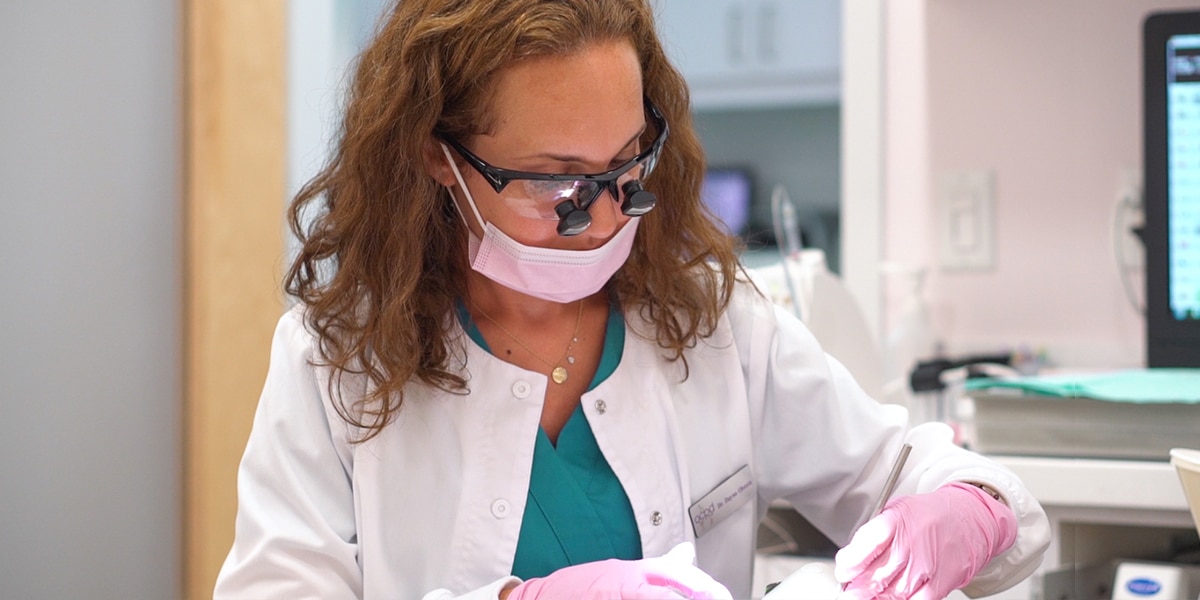Restorative Pediatric Dentistry in Monroe, NY

Orange County Pediatric Dentistry provides restorative dental services to children in Monroe, NY. Contact us at 845-928-2206 to learn more and schedule your dental care appointment.
The STA™ (Single Tooth Anesthesia) System
With the STA™ (Single Tooth Anesthesia) System, we offer our patients a painless, stress-free alternative to local dental anesthesia via syringe.
Silver Diamine Fluoride (SDF)
Silver diamine fluoride (SDF) is a conservative approach to active dental decay. It can be used to help prevent dental cavities from forming, from growing, or from spreading to other teeth. SDF comes as a liquid that is simply brushed on to the cavity to stop current decay and to also prevent new decay in the future. SDF works to remineralize small areas of decay in the enamel or to attempt to stop the growth of larger areas of decay. This treatment does not necessarily prevent the need for the placement of a filling, but may able to delay or eliminate further dental treatment. The application of SDF is quick, pain free and easy for young children to tolerate.
Composite (White) Fillings
Tooth-colored fillings are the most lifelike material used to fill cavities. Composite fillings can be done in one visit. Once the decay is removed, the tooth is filled with this composite material that hardens immediately after placement.
Pulp Treatment (Pulpotomy/Baby Root Canal)
If the inner chamber of the tooth, known as the dental pulp, is invaded by the cavity, it will gradually deteriorate and become infected. The root canal process involves removing the infected pulp, cleaning out the chamber and roots (if needed), and filling the chamber and/or canals with a material that will help restore the tooth until it is time for in to normally exfoliate ( fall out on its own naturally).
Dental Crowns
Crowns are used to restore damaged or decayed teeth in children. Crowns completely cover the remaining tooth structure after it has been treated. We offer both stainless steel and EZ-Pedo metal-free zirconia crowns to ensure the best fit for each child and for each tooth.
A tooth that can not be saved with restorative materials may need to be removed. Before removing the tooth, the area will be numbed with local anesthesia. The tooth is then loosened using a special dental instrument known as an elevator. After the tooth is loosened from the socket, it is removed.
Cavity FAQs
Is it necessary to fill cavities in baby teeth?
Primary or “baby teeth” are important for many reasons. Typically, they remain in the mouth for many years and filling cavities in baby teeth aides chewing, speech, and prevention of pain or future infections. Baby teeth also serve as a space-maintainers for permanent teeth. When they are removed too early, space for the permanent teeth can be lost.
Are fillings safe for kids?
We use white composite fillings that are BPA free and natural-looking. It is the same material used for adult fillings and aid in tooth functioning and chewing as they are very resistant to wear. These white fillings also require less drilling than metal fillings, leaving as much natural tooth structure as possible.
What happens if you don't fill a cavity in a baby tooth?
All cavities should be evaluated by your dentist to determine the amount of time the tooth will be remaining in the mouth. Small cavities in teeth that are anticipated to be lost soon can be watched. However, if the tooth will be in place for years, then not filling the cavity can often do more harm than good. If large cavities progress and are not treated, pain or infection can occur.
How do dentists fill cavities in toddlers?
As a pediatric dentist, we are trained to treat children of all ages. These extra years of training are important for understanding the unique needs of pediatric patients. We employ a variety of behavioral management techniques to ensure a positive and successful dental experience for even the youngest of children.
Why does my kid get so many cavities?
Cavities can be due to many factors. Brushing technique and frequency, as well as diet and genetics, can all play a role. When a patient comes for an exam, we focus not only on identifying and treating current cavities, but also providing education and advice to prevent future cavities.
Contact us at 845-928-2206 to schedule your dental care appointment.
FAQs About Restorative Dentistry for Children
Are dental crowns safe for kids?
Yes, dental crowns are safe. They are often used to protect a tooth that has been cracked or broken - or a tooth that has a large cavity. They are often the best choice for saving a tooth and restoring its integrity.
How long do dental crowns last?
Dental crowns last, on average, about 5 to 15 years - or until replaced with an adult tooth. The longevity of the crown is directly related to the level of care it receives. Good oral hygiene habits are beneficial for the crown whereas bruxism (teeth clenching or grinding), chewing ice, biting fingernails, etc. can be detrimental.
Is an extraction easier than trying restorative treatment?
While extraction may seem like a quick fix, we do everything possible to save the tooth before moving for an extraction - especially if it is in reference to an adult tooth. There may be some incredible artificial teeth available, but none can compare to a natural tooth.
Does a pulpotomy hurt?
No, a pulpotomy does not hurt. Local anesthesia will be used during the procedure so that the area remains numb with no pain. However, once the anesthesia begins to wear off, some discomfort may be felt. Over-the-counter pain medication can provide relief.
Is a pulpotomy different from a root canal?
Similar to a root canal, a pulpotomy is used to remove decay and restore infected teeth. The difference is that a pulpotomy is used in primary (baby) teeth and only removes the top area of the pulp whereas a root canal removes the entire pulp.
Contact us at 845-928-2206 to schedule your appointment.

